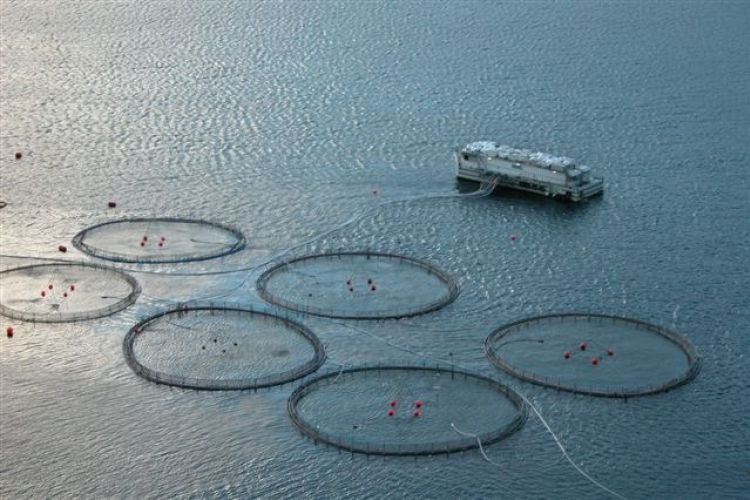Food Tech for growing population
About 37% of the area of the entire world is agricultural land, a third of which (about 11%) is used for crops. And as the population of the world rises to 9.7 billion people in 30 years, the land available for crops will reduce. Thus, there is an immediate need to try and improve the efficiency of food production. Experts predict that agricultural yield must increase by 50% between now and 2050. How to do this is the question facing agricultural scientists across the world.
Plants use sunlight to produce energy for their metabolism and food production. This is referred to as photosynthesis (wherein sunlight is used to make energy-rich molecules needed for producing food molecules). However, the efficiency of photosynthesis is rather low, just about 5% in most land crops. The most efficient land crop with 8% average is sugarcane, which is not all that edible, except for the sugar in it. If only we can increase the efficiency of crops such as wheat, rice and other grains!
Realizing Increased Photosynthetic Efficiency
One such attempt is through the project RIPE (Realizing Increased Photosynthetic Efficiency), undertaken by a group of scientists at the University of Illinois in the US, supported by the Bill and Melinda Gates Foundation
Genetic engineering
One way of achieving it has been shown in the model plant tobacco where the scientists could “engineer photosynthesis” by increasing the expression of three genes involved in processing light. This increases the tobacco yield by 20%. The team is trying to do the same genetic engineering method in other plants. One such plant is cassava whose roots are carbohydrate-rich , and eaten by over half a billion people in Latin America and parts of Africa; indeed it is eaten as staple food in parts of Andhra, Kerala and the hilly areas of Assam. Genetic engineering of this plant was done, just as in tobacco, and appears to work.
Photorespiration
Another way that some other scientists are trying is to reduce what is called photorespiration in plants. Here the energy and oxygen produced in the ‘light reaction’ of photosynthesis is drained by the plant to make “wasteful” products in the ‘dark reaction’, and not just carbohydrates and other food material, particularly when the plant’s leaves close in order to reduce water loss by evaporation. If we can find ways to reduce this photorespiration, edible food yields can go up.
Many of these research attempts involve the introduction of external genes and gene products into food crops, and these are opposed by group of people who do not want genetic engineering and genetically modified plants. This is a curious situation where science finds ways to deal with genes so as to improve yields while sociology opposes it based on worries about safety, as well as monopolistic control of food material through exclusive patents and other factors.
Mariculture
Mariculture is a specialized branch of aquaculture involving the cultivation of marine organisms for food and other products in the open ocean, an enclosed section of the ocean, or in tanks, ponds or raceways which are filled with seawater. An example of the latter is the farming of marine fish, including finfish and shellfish like prawns, or oysters and seaweed in saltwater ponds. Non-food products produced by mariculture include: fish meal, nutrient agar, jewellery (e.g. cultured pearls), and cosmetics.
It is in this context that we need to open our minds and expand our ideas about our food habits. The most efficient use of photosynthesis is actually not by land plants but by micro and macro algae, such as seaweeds. These are the champions, contributing to about 50% of all photosynthesis in the world. And many of them, notably those with dark green, red and brown colour, are edible. They are low-calorie and nutrient-dense food items and eaten by people in most parts of Southeast Asia – Philippines, Malaysia, Vietnam, Indonesia, China, Korea and Japan, and also in some in coastal Atlantic region.
Seaweed research
About 844 seaweed species are reported from India, a country with a coast line of 7,500 km. Peninsular India from Gujarat all way to Odisha and West Bengal has a coastline of 5,200 km, and Andaman and Nicobar together have a coastline of 2,500 km. Thus, while we have 63% of our land area for crop agriculture, we should not forget this vast coastal area, much of which breeds seaweeds. Research in the area of edible seaweeds in India has been going on for over 40 years. The Central Salt and Marine Chemicals Research Institute (CSMCRI) at Bhavnagar, Gujarat has done pioneering work in the area. They have been involved for decades in research and propagation of seaweeds as potential of foods for people, as well as for isolating important chemicals of technological importance and crop biostimulant purposes.
Thus India should embark on Mariculture as vigorously as Agriculture, given its 7,500 km-long coastline. Further, it does not require pesticides, fertilizers and water for irrigation, which is an added advantage.
Seaweeds are rich sources of vitamins A and C, and minerals such as Ca, Mg, Zn, Se and Fe. They also have a high level of vegetable proteins and omega 3 and 6 fatty acids. Best of all, they are vegetarian and do not have any fishy smell, thus good and acceptable.



 IAS -2025 Prelims Combined Mains Batch - III Starts - 14-04-2024
IAS -2025 Prelims Combined Mains Batch - III Starts - 14-04-2024